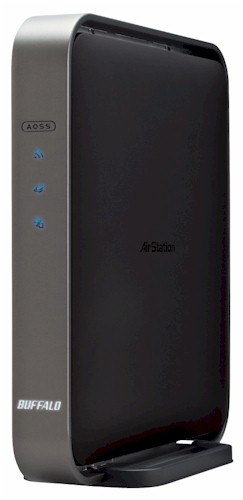
| At a glance | |
|---|---|
| Product | Buffalo Technology AirStation AC1300 / N900 Gigabit Dual Band Wireless Router (WZR-D1800H) [Website] |
| Summary | First-to-market Draft 2.0 802.11ac router based on Broadcom chipset |
| Pros | • Can get ~ 450 Mbps total throughput in 80 MHz draft AC mode • Built in PPTP server • NAS feature supports DLNA and Torrent downloads |
| Cons | • Moderate single client throughput gain from draft 11ac • No guest SSID • No WDS or client mode bridging • Basic routing feature set |
Typical Price: $180 Buy From Amazon
Preface
Updated 7/16/2013 – Link to retest
Updated 6/24/2012 – Added WDS notes in feature
I have to say I’m surprised at how quickly draft 802.11ac products have come to market. Although the IEEE working group has been toiling away on the spec since September 2008, consumer networking product makers have gone from revealing product last December to shipping product in about six months. Keep in mind that this gear is shipping about 18 months ahead of 802.11ac spec final approval (currently estimated at December 2013).
If you don’t know what all the fuss is about, the short story is that ac is a 5 GHz-only extension of the 802.11 spec, focused on "Very High Throughput", as its IEEE Project name states. Where 802.11n (official IEEE project title "High Throughput") bumped link rates up to the 450 Mbps that we see in current top-of-line three-stream wireless products, 11ac can achieve link rates up to 2.6 Gbps (6X) with those same three streams.
These higher rates are achieved primarily by bonding together more 20 MHz wide channels and by using higher-density coding (256 QAM vs. 64 QAM in 802.11n). Producing those much-hyped 1300 Mbps link rates, however, requires four 20 MHz wide channels. Which is why 802.11ac is limited to use in the 5 GHz band only where there are up to 24 non-overlapping channels available vs. three in 2.4 GHz. See Why 802.11ac Will Kill The 5 GHz Wi-Fi Band for more on this.
I’m taking a multi-part approach to reviewing Buffalo’s draft 11ac gear because:
1) Enquiring minds want to know ASAP what that "1300 Mbps" really produces in usable throughput.
2) Given all the combinations of things to be tested, I’m going to have to space out the testing over the next week or so. Otherwise nothing else will get done around here!
So in this first part, I’m going to cover the innards, features and functions, routing and NAS throughput. I’m also going to test draft 11ac wireless throughput, but with same room (Location A) tests only, primarily focused on exploring the maximum throughput available from the WZR-D1800H paired with Buffalo’s matching WLI-H4-D1300 draft 11ac bridge.
Subsequent part(s) will look at range testing with this same pair and also see how our standard 802.11n test clients fare. Since the N modes on both radios support both two and three-stream operation, there is potentially a lot of testing to be done. Frankly, I haven’t figured out yet whether I’m going to run all tests in for both two and three-stream operation, because I also want to look mixed-mode operation, too. If you have any thoughts on this, please post to the Forum thread.
Overview
Buffalo surprised everyone with the D1800H’s final packaging. Instead of the admittedly odd form-factor shown at CES, the production product is elegant and understated. Vertically positioned with its supplied mounting feet, the dark and darker-gray plastic stands about 8.5" high, 7" deep and a tad over 1" thick. The supplied pair of feet are used to stabilize the router in vertical mode and stand it off a tabletop or shelf (to enhance airflow), should you choose to lay it down. I would go with the vertical orientation, since it better positions the antennas and also provides better natural convection cooling.
In keeping with the currently popular spouse-friendly design esthetic, there are only a few front panel lights (Figure 1), with the ones that blink being thankfully dim. The Buffalo logo, on the other hand, is bright enough to use as a night-light, but thankfully only blinks when the router is in distress. You can shut off the LEDs by using the schedulable ECO feature, but I found this doesn’t include the brightest Buffalo logo light.
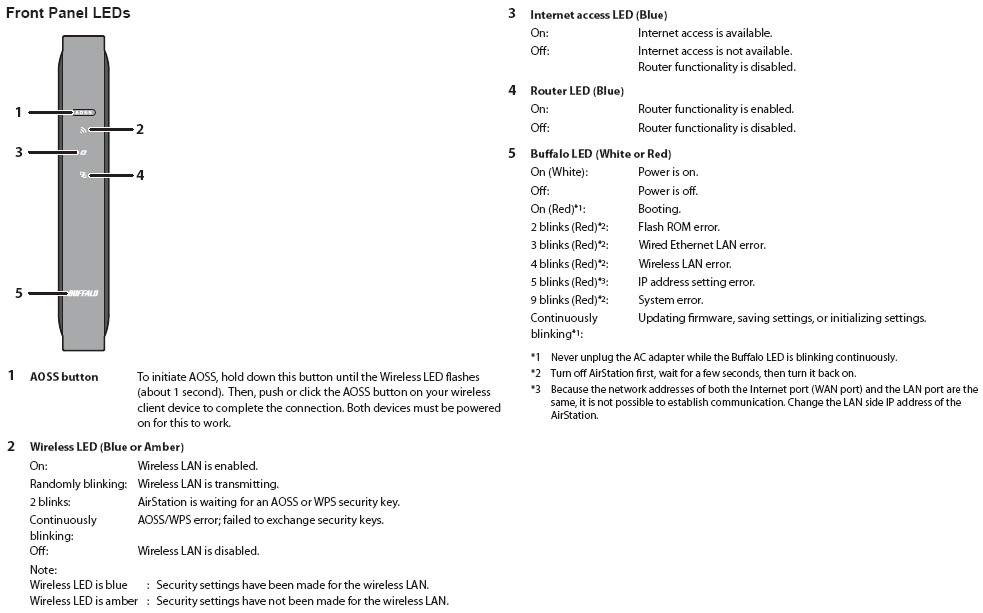
Figure 1: Front panel indicators
The rear panel ports and buttons are shown in Figure 2. All Ethernet ports are 10/100/1000 and there is one USB 2.0 port for storage and printer sharing.
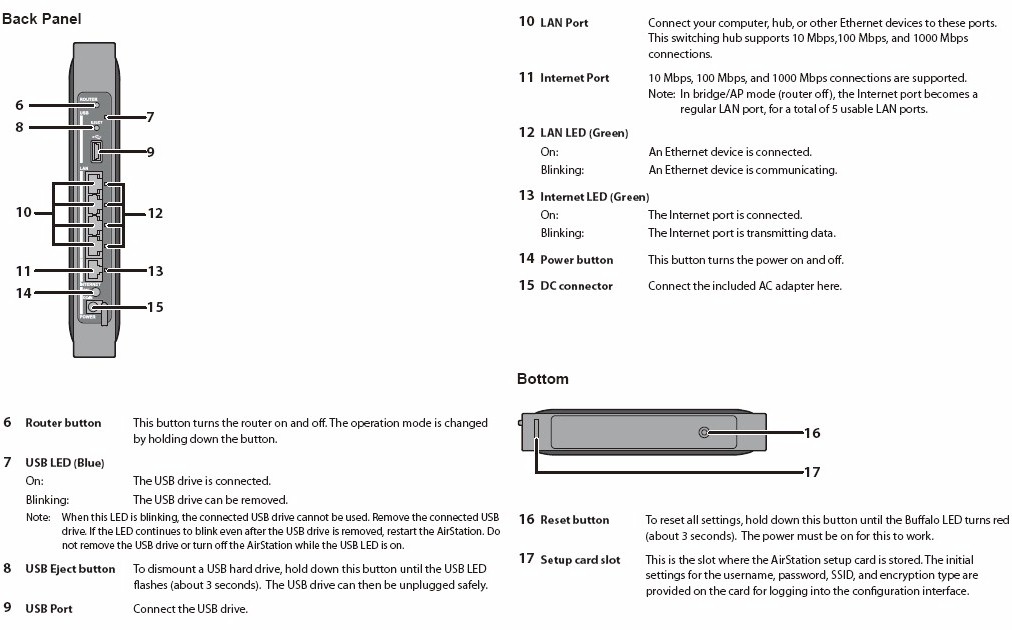
Figure 2: Rear panel callouts
The card found in the Setup card slot (17) is a thoughtful touch. It contains the router admin IP address, username and password on one side and default client access info on the other (SSID, Key and Security type (WPA2/AES, naturally!). You can leave it tucked into the slot, or remove it for safekeeping (or misplacing) should you not want the keys to your wireless kingdom left around for easy access.
Inside
Broadcom appears to be the vendor of choice for the first round of draft 802.11ac products and Buffalo has been open about its draft 11ac technology partner. So it’s neither a secret nor surprise that both the D1800H router and D1300 bridge are Broadcom based. Buffalo filed a short-term confidentiality request to temporarily block the usual handy internal FCC pictures. So I had to open ’em up for a look see.
There are three antennas per radio, PCB antennas for 5 GHz (grey cable) and bent-metal for 2.4 GHz (white cables). All are positioned at the top and front of the router when the router is stood vertically. Note that both radios are connectorized mini-PCIe boards. The 2.4 GHz radio probably could have been put directly on board to save cost since the BCM4331 has been around for awhile. But keeping the draft 11ac radio as a module is probably a smart move at this point.
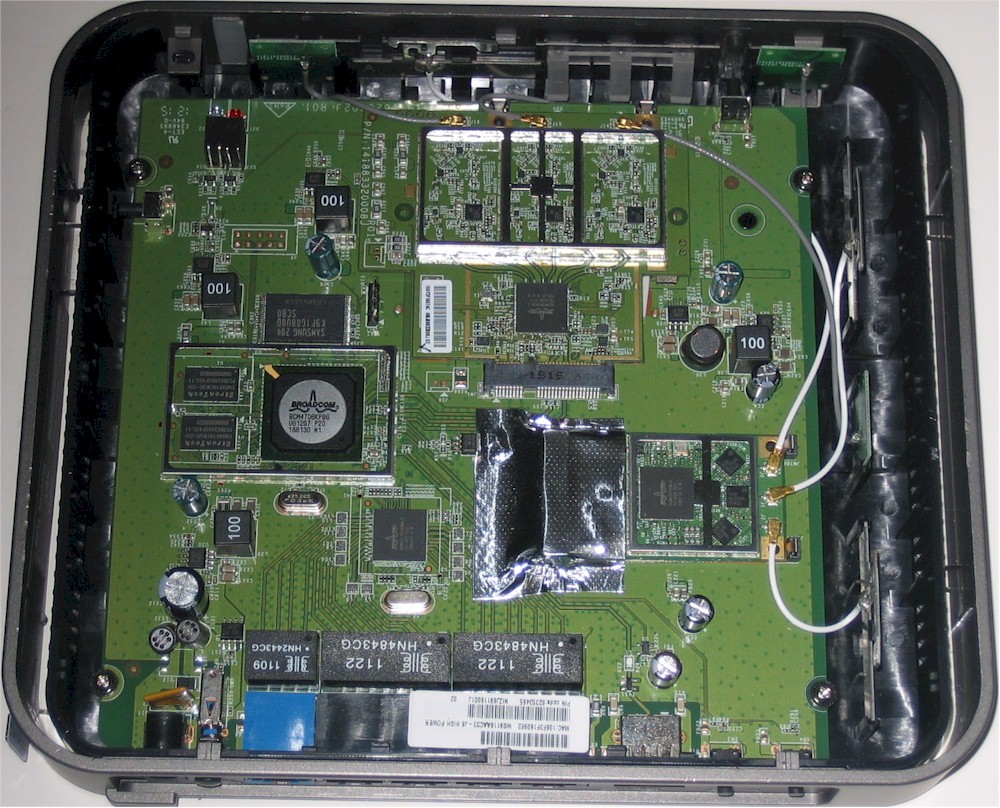
Figure 3: WZR-D1800H inside view
Figure 3 was taken with all heatsinks and RF shields removed so that I could identify all the components, which are summarized in Table 1. This is a pretty straightforward design, similar to the other top-of-line Broadcom based routers also shown in Table 1, except for the BCM4360 draft 11ac radio.
| Buffalo WZR-D1800H / WLI-H4-D1300 | ASUS RT-N66U | NETGEAR WNDR4500 | |
|---|---|---|---|
| CPU | Broadcom BCM4706 | Broadcom BCM4706 | Broadcom BCM4706 |
| Switch | Broadcom BCM53125 | Broadcom BCM53115 (?) | Broadcom BCM53115 (?) |
| RAM | 128 MB | 256 MB | 128 MB |
| Flash | 128 MB | 32 MB | 128 MB |
| 2.4 GHz Radio | – BCM4331 – SiGE SE2594L Dual Band 802.11a/b/g/n Wireless LAN Front End (x3) |
– BCM4331 | – BCM4331 – 2.4 GHz power amps (x3) (?) |
| 5 GHz radio | – Broadcom BCM4360 – Skyworks SE5003L 5 GHz, 23dBm Power Amp w/ Power Detector (x3) |
– Broadcom BCM4331 | – Broadcom BCM4331 – 5 GHz power amps (x3) (?) |
Table 1: Router component summary and comparison
Figure 4 shows the WLI-H4-D1300 bridge’s inside view, with all heatsinks and RF shields undisturbed. The only difference between the two that the WAN port components (connector, transformer, etc.). The WAN port Ethernet PHY is part of the BCM53125 switch.
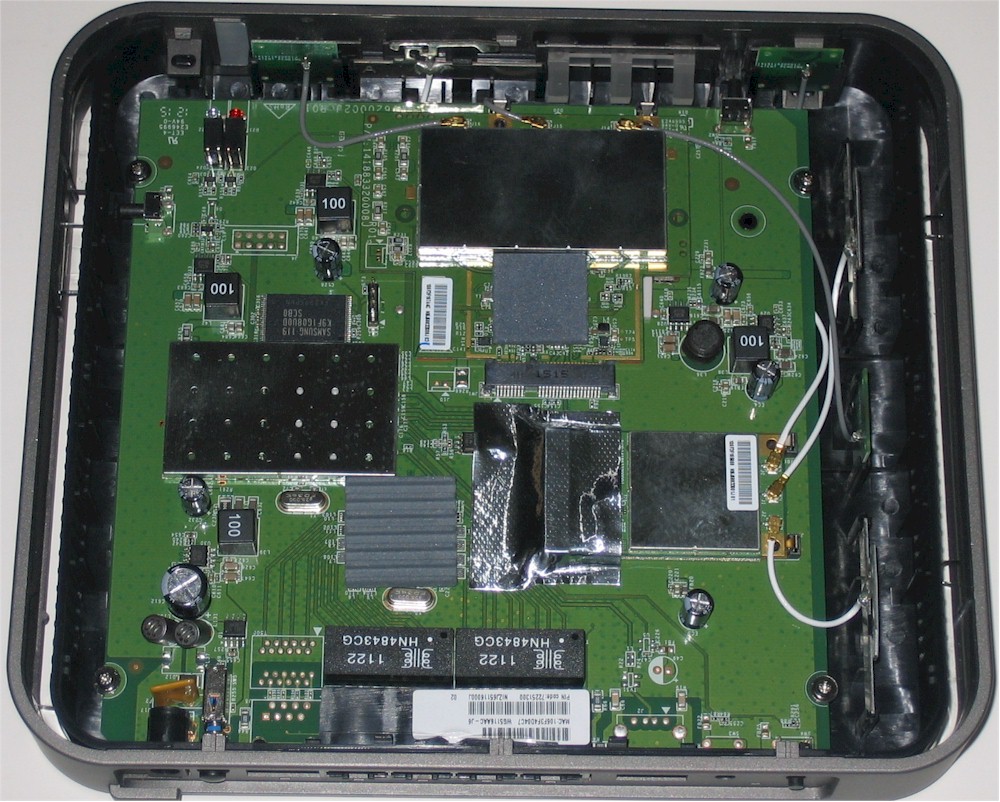
Figure 4: WLI-H4-D1300 inside view
Features
Unlike Buffalo’s other recent routers, the D1800H doesn’t have the option of loading DD-WRT firmware, at least not any that Buffalo has approved. The firmware you get presents a familiar face and feature set to those familar with other current Buffalo routers. Figure 5 shows the landing screen that you get upon login, which provides quick links to key setup features.
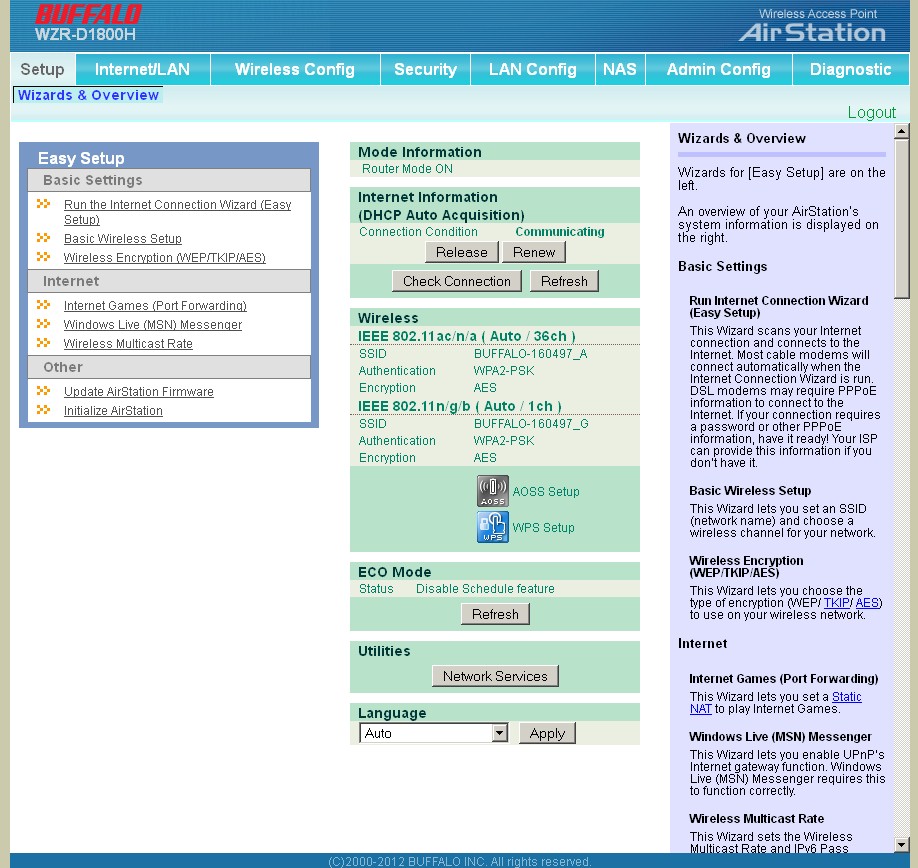
Figure 5: Setup landing screen
Some setting changes require a 17 second reboot, while others need 83 seconds—at least those are the times shown in the settings save screens. Aside from that, the admin interface is reasonably quick. The feature set is relatively basic for a top-of-line router. Here’s the rundown:
Routing
- DHCP, Static, PPPoE WAN types
- DHCP server with MAC address reservation
- Built-in dynamic DNS client for TZO.com and dyndns
- Static routes
- DMZ host
- IPv6, PPPoE, PPTP pass through
- PPTP server (supports MS-CHAPV2 40/128 bit, MS-CHAPV2 40 bit, MS-CHAP, PAP, CHAP authentication)
- WAN ping, IDENT, NetBIOS allow / deny
- 32 IP filtering rules with direction, IP range, port range
- Three level manual uplink QoS for eight services (single port)
- Remote admin access enable, IP access filtering, port setting and graphic authentication enable
- UPnP support
- Syslog support
- Schedulable ECO mode for wired and wireless access
- USB SMB/CIFS storage sharing
- Secure remote storage access via BuffaloNAS.com portal
- UPnP / DLNA media server (USB storage)
- BitTorrent download (USB storage)
- USB Printer sharing
Wireless features
- One SSID per radio
- Transmit power adjust (100, 75, 50, 25%)
- MAC address filtering
- WEP, WPA / WPA2 Personal and Enterprise (RADIUS) support
- Wi-Fi Protected Setup (WPS) support, pushbutton and PIN
- Buffalo AOSS support
- Auto and manual channel set
- Wireless Bandwidth Mode (2.4 GHz: 20, 40 Mhz; 5 GHz: 20, 40, 80 MHz)
- SSID broadcast control
- WMM-EDCA Parameter settings
- Wireless client isolation (from each other)
- Multicast rate and Aging time adjust, Snooping enable (default)
Missing features
Updated 6/24/2012
- Triggered port forwarding
- IPv6 support (other than passthrough)
- URL / keyword filtering
- Email alerts or log sends
- Guest WLAN / multiple SSIDs
- WDS bridging/repeating
- HTTPs admin access
- Wireless mode control (a,b,g,n, mixed, etc.)
- Firewall rule scheduling
- "Movie Engine" QoS (feature in other Buffalo routers)
A few of the above items deserve further explanation. The ECO mode feature is for scheduling periods for general router use. During "sleep" periods, you can shut off wireless access, shut off or limit wired LAN access to 100 Mbps and shut off the front panel LEDs (except for the bright "Buffalo" logo).
As mentioned at the outset, this isn’t the most flexible router. You can’t schedule anything in the firewall and there is neither URL nor keyword filtering. Folks accustomed to looking for separate "port forwarding" and outbound service blocking might be confused by their merge into an "IP Filter" feature. This feature allows you to define 32 rules in total for both functions and doesn’t allow specifying different source and destination ports. Note that triggered port mapping isn’t supported either, nor is IPv6.
VPN passthroughs are limited to just PPTP, with no IPsec or L2TP. Curiously, Buffalo includes PPPoE and IPv6 passthroughs in this menu. Note, however, you get a PPTP server that you can use for secure remote connection to your LAN.
QoS features are minimal—only eight three level manually-set priority rules for uplink traffic only.
Figure 6 shows the basic wireless settings screen. Many users will miss the ability to set the 802.11 mode, i.e. mixed, G only, N only, etc. and may really miss multiple SSID / Guest WLAN support. Buffalo has also opted to not support WDS bridging/repeating or a client bridge mode that would allow linking two D1800H’s together, choosing instead to provide the matching WLI-H4-D1300 bridge.
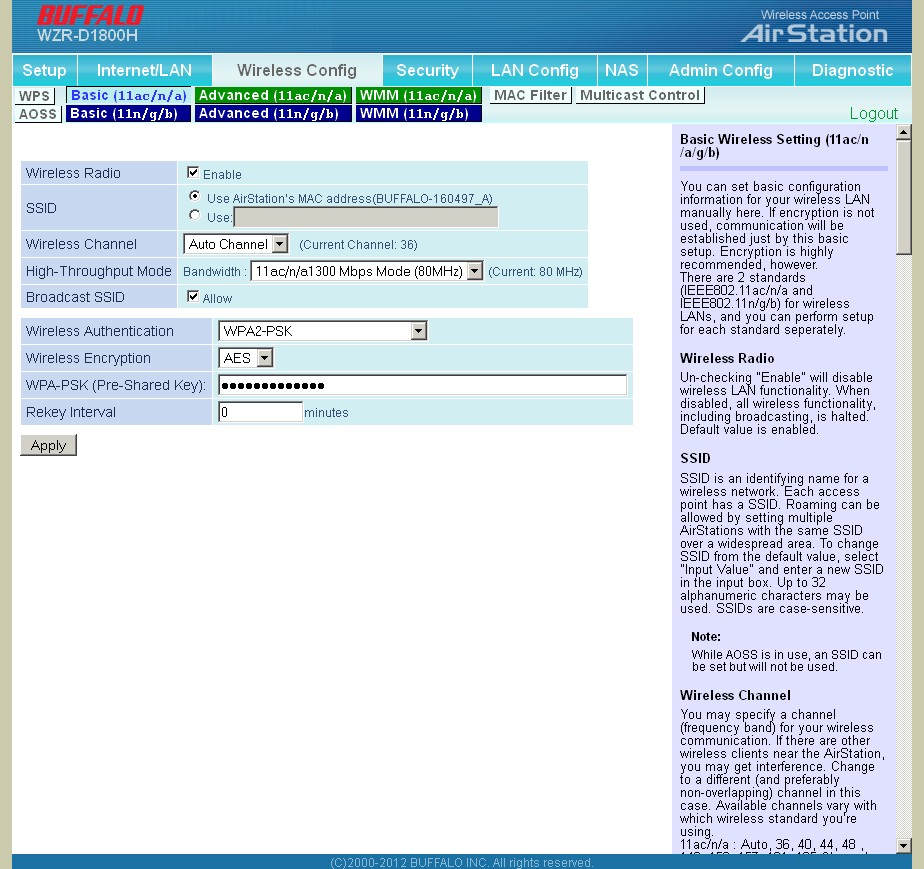
Figure 6: Basic Wireless control
Key settings options for both radios are summarized in Table 2. Note the nine available channels in 5 GHz, vs. the typical eight found on other routers.
| Setting | 5 GHz | 2.4 GHz |
|---|---|---|
| Channel | Auto, 36, 40, 44, 48, 149, 153, 157, 161, 165 | Auto, 1 – 11 |
| High-Throughput Mode (bandwidth) | 80 MHz, 40 MHz, 20 MHz | 40 MHz, 20 MHz |
| Authentication | None, WPA-PSK, WPA2-PSK, WPA./WPA2 mixedmode – PSK | |
| Encryption | AES, TKIP, TKIP/AES mixedmode | |
| Basic Rate Set | All / 6,12,24 Mbps (default) | All / 1,2,5.5,11 Mbps (default) / 1,2 Mbps / 1,2,5.5,11, 12, 24 Mbps |
| Output Power | 100, 75, 50, 25 % | |
Table 2: Wireless settings summary
Check the gallery below for more admin screenshots and commentary.

The Setup page greets you upon login
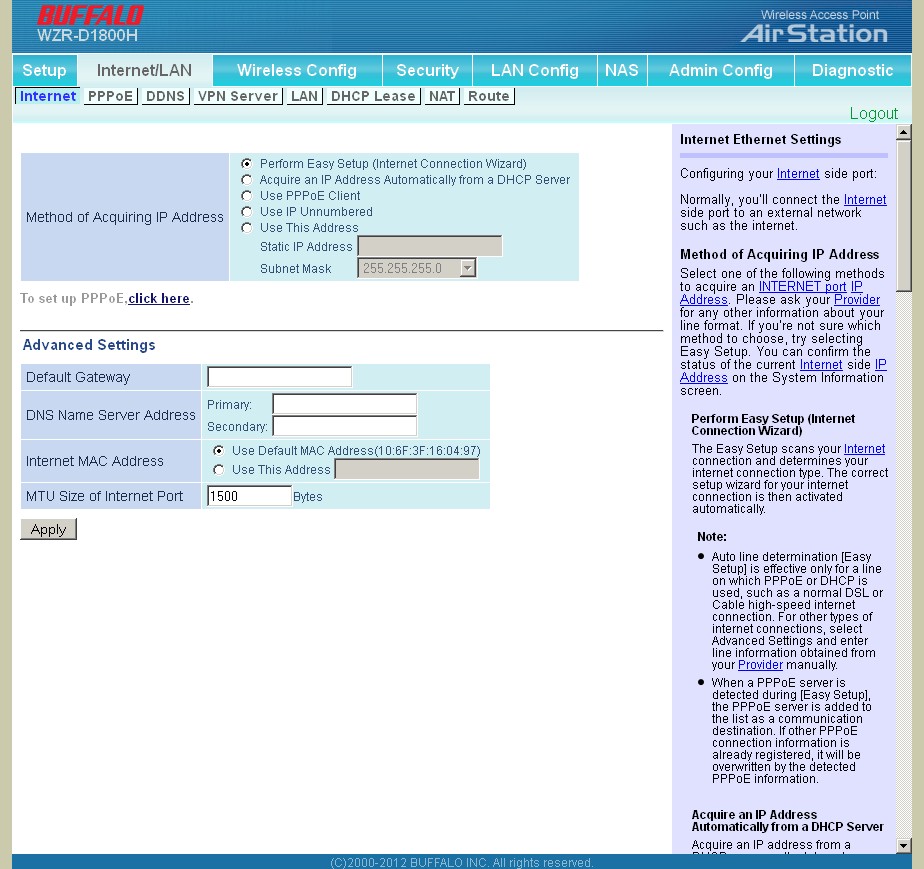
Internet connection types include static, DHCP,PPPoE, but no PPTP
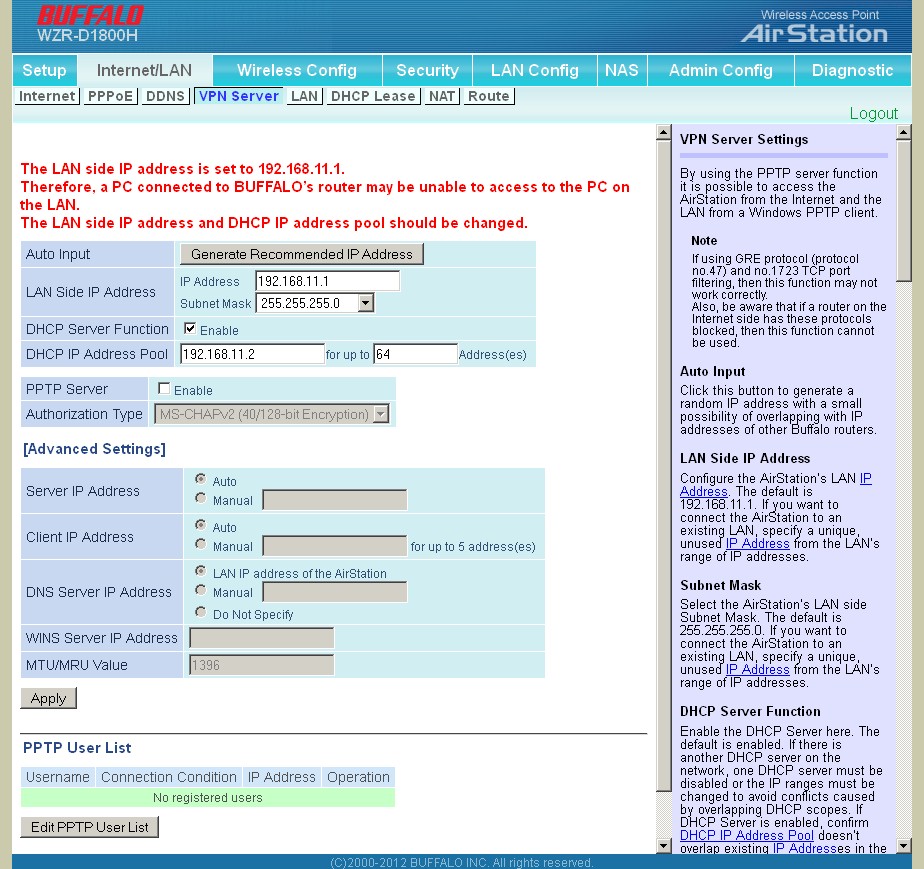
Settings for the built-in PPTP server. MS-CHAPV2 40/128 bit, MS-CHAPV2 40 bit, MS-CHAP, PAP, CHAP authentication is supported.
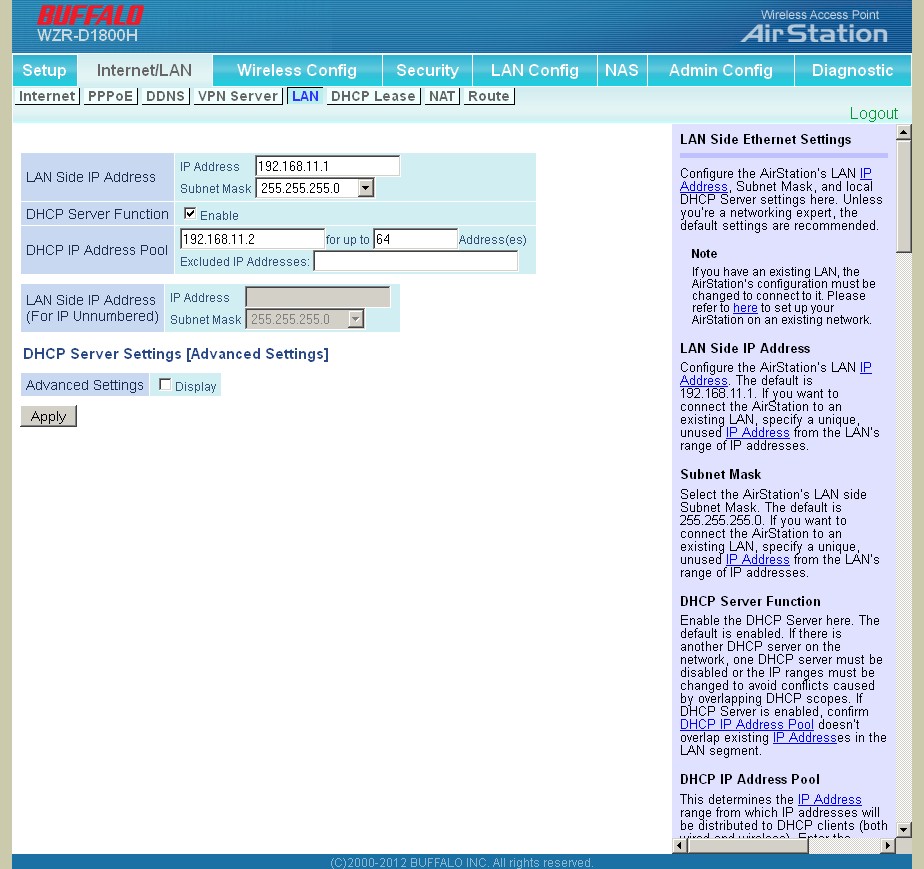
You can reserve DHCP addresses, but can’t adjust DHCP lease times or revoke them.
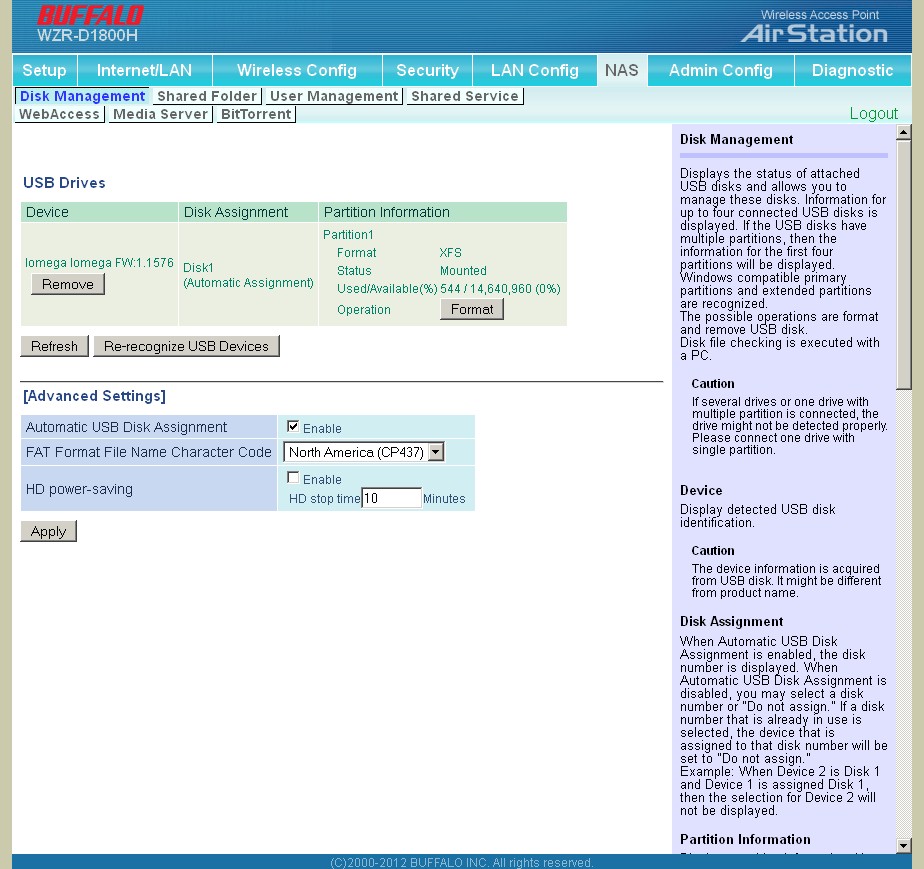
Attaching a USB drive enables the NAS menus. Note the power save feature
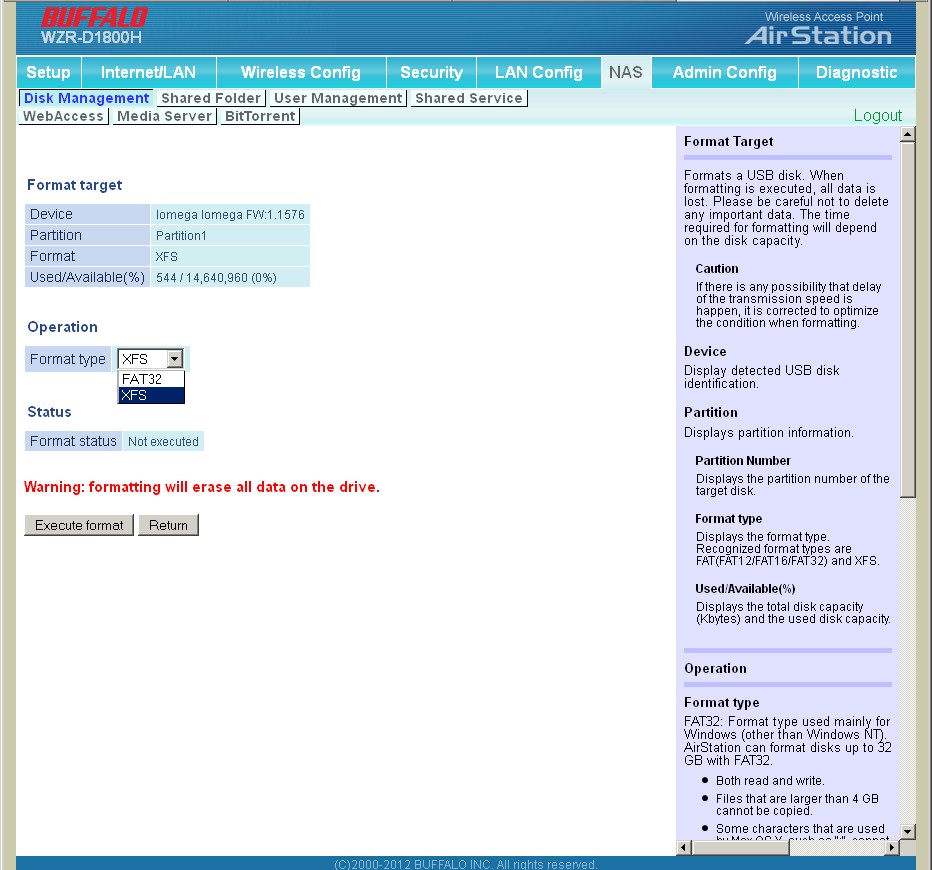
There is a handy formatter for FAT32 and XFS.
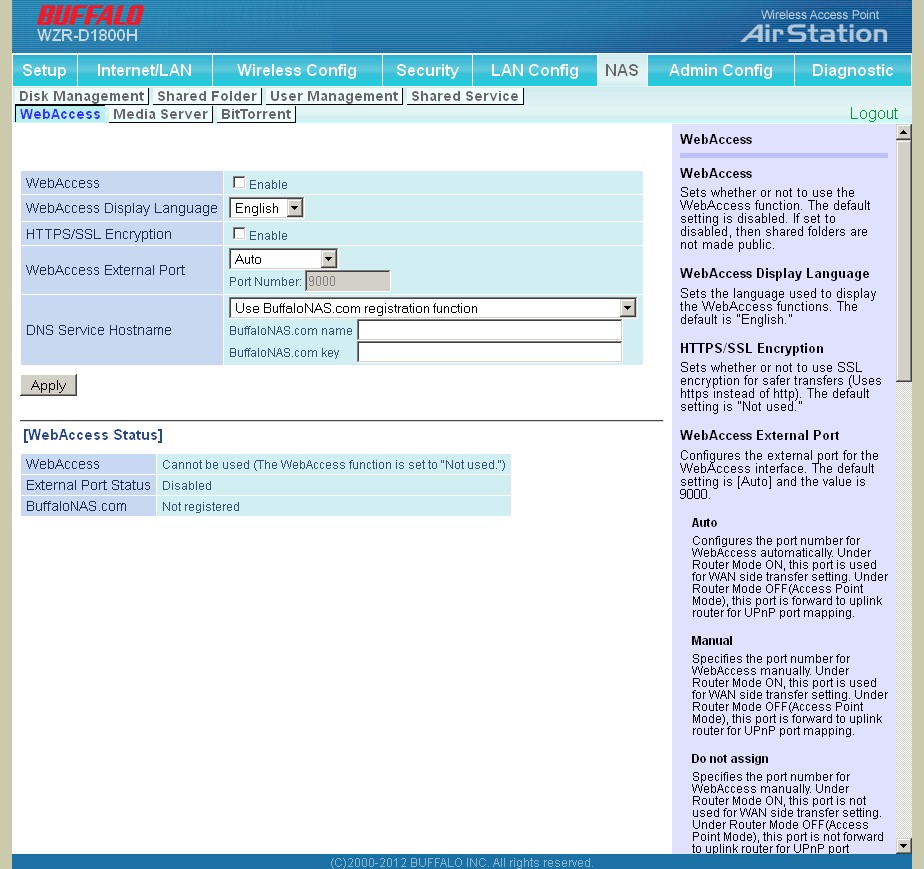
You set up secure remote access to files on the shared drive here. Note the option of using BuffaloNAS.com as a remote login portal vs. setting up dynamic DNS and messing with port forwarding.
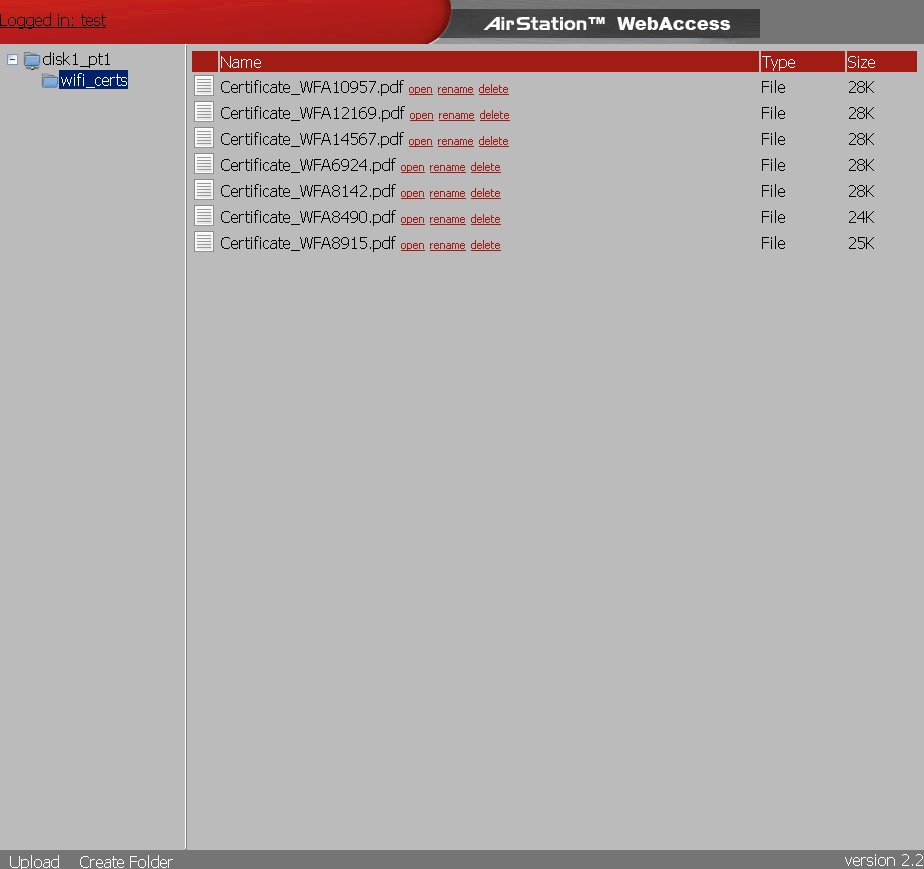
Remote access via BuffaloNAS.com

Basic settings do not include mode controls, i.e. b/g, N only, etc. You can adjust bandwidth mode and channel on both radios and enable/disable radio.
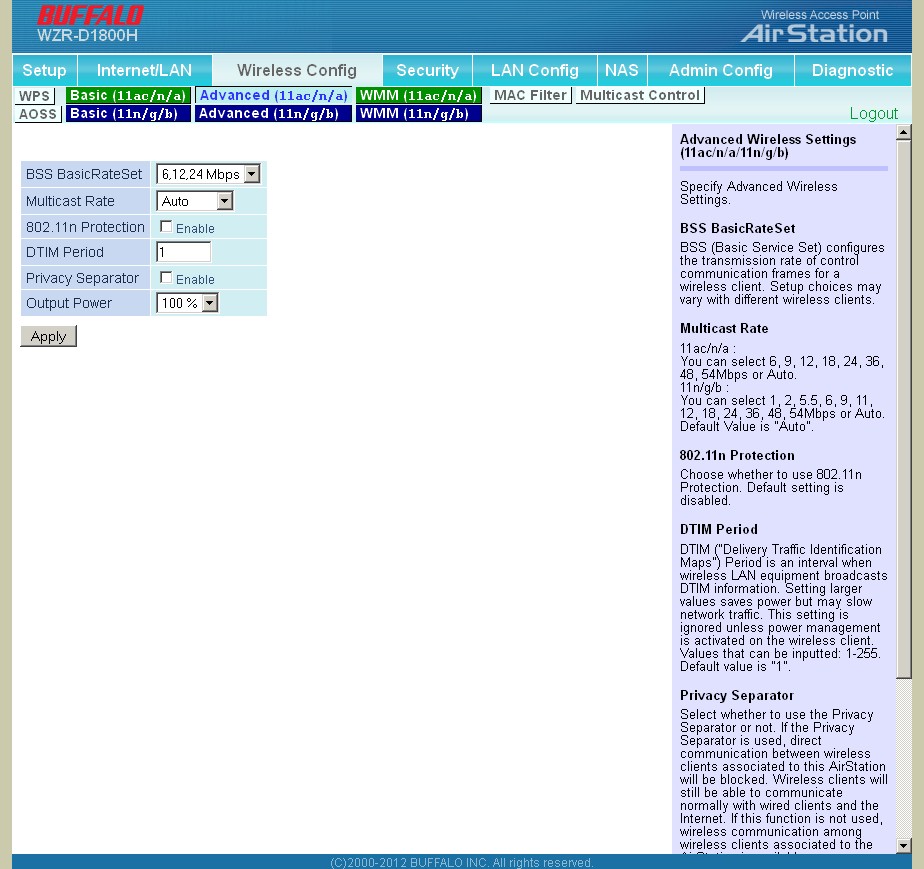
The most commonly used controls here are output (transmit) power and privacy separator.
Routing Performance
Routing performance for the WZR-D1800H using our standard test method is summarized in Table 3. Ver.1.86 firmware was used for the test.
| Test Description | WZR-D1800H |
|---|---|
| WAN – LAN | 566 Mbps |
| LAN – WAN | 590 Mbps |
| Total Simultaneous | 590 Mbps |
| Maximum Simultaneous Connections | 34,925 |
| Firmware Version | Ver.1.86 |
Table 3: Routing throughput
Figure 7 shows the composite IxChariot plot for the three routing performance benchmarks, where relatively high variation makes it tough to see each test individually. The main thing is that there are no big dropouts that would indicate routing hiccups. The simultaneous sessions test maxed out at our 34,925 session test limit.
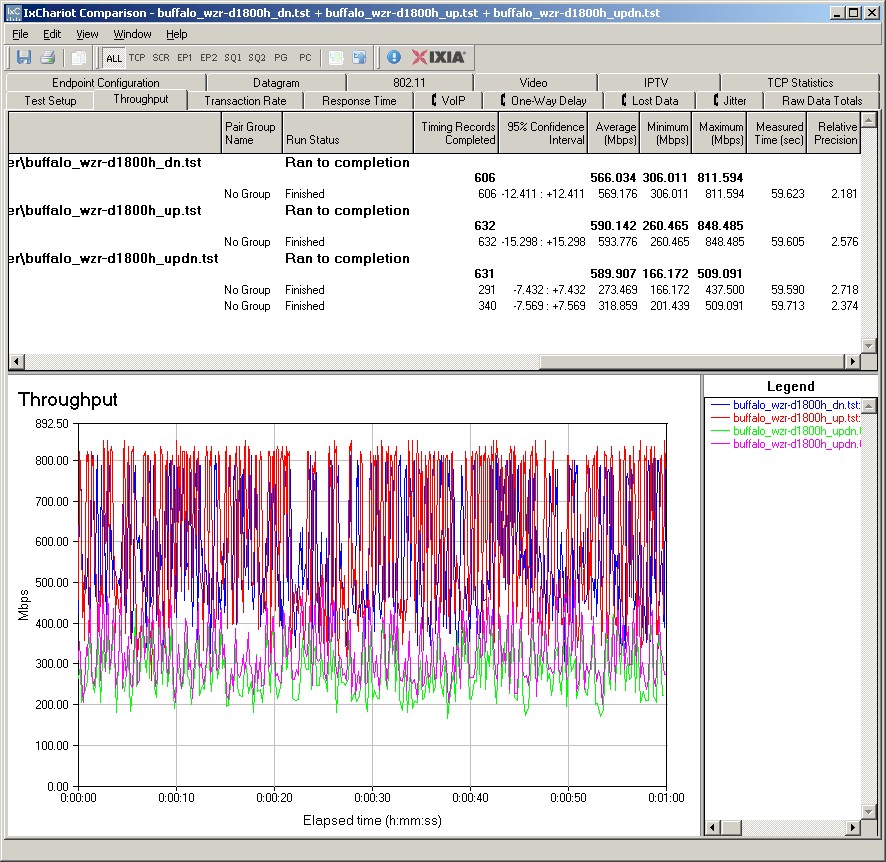
Figure 7: Routing throughput
I’m sure there will be whiners that the D1800H doesn’t have Gigabit routing throughput to go along with its Gigabit wireless speed claims. But as we’ll see shortly, those high link rates are just bait to attract suckers that don’t know any better. As I keep saying, 500 Mbps of routing juice is plenty to handle most users’ needs. Buying higher throughput than your ISP provides doesn’t provide any tangible benefit.
Storage Performance
I ran quick Windows filecopy tests using the standard NAS testbed to the D1800H with our standard Iomega UltraMax Pro drive configured in RAID 0 and formatted in FAT32 and XFS using the router’s built-in format feature.. I pulled results from a few other high-end routers into Table 4.![]()
| WZR-D1800H | RT-N66U | WNDR4500 | E4200V2 EA4500 | |
|---|---|---|---|---|
| FAT32 Write (MBytes/s) | 7.3 | 10 | 9.2 | 9.8 |
| FAT32 Read (MBytes/s) | 11.8 | 12 | 11.6 | 21.6 |
| XFS Write (MBytes/s) | 8.4 | – | – | – |
| XFS Read (MBytes/s) | 8.7 | – | – | – |
Table 4: File copy throughput
Since the D1800H is the only router supporting XFS, I don’t have figures for the other routers. But the results show there isn’t a performance advantage to be had from using XFS.
Best throughput was with FAT32 reads of almost 12 MB/s, which is in line with all the other routers listed except for Cisco’s Linksys E4200v2 / EA4500. FAT32 writes lag a bit behind the competitors, but the difference is such that you probably wouldn’t notice in real-world use.
Wireless Performance – Draft 802.11ac
So far, I’ve only been able to test same-room (Location A) performance with the D1800H and WLI-H4-D1300 bridge linked as a pair using WPA2/AES encryption. Router and bridge were in the same room about 10 feet apart with no other wireless networks operating.
The bridge and router ship configured to automatically establish a 5 GHz band connection between them using the draft 11ac 80 MHz bandwidth mode when you use the AOSS buttons on the front, so that’s what I did. I logged in afterward to confirm that things were linked as expected. Note that the bridge ships with a default IP of 1.1.1.1, so you’ll need to set a client to that IP range to log in and change it so that you can access its settings.
Since I really wanted to check on what was happening, I fired up a wi-spy DBx with Chanalyzer Pro that the folks at MetaGeek were kind enough to provide when I stopped by to see them at Interop last week. I then started an IxChariot throughput script blasting away and took the screenshot in Figure 8.
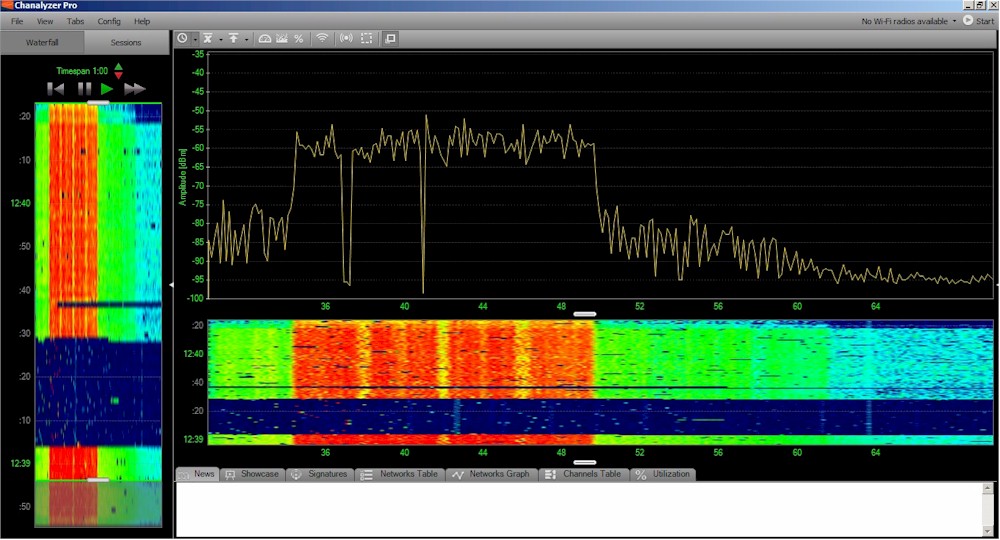
Figure 8: Draft 802.11ac devouring 5 GHz spectrum
The "waterfall" views to the left and below the spectral plot clearly show channels 36, 40, 44 and 48 in use. Since Buffalo only enables access to nine channels out of the possible 24 in the 5 GHz band (36, 40, 44, 48, 149, 153, 157, 161, 165), this means that only two draft 11ac networks can share the same airspace and not compete for bandwidth.
Which brings us to the real question, how fast does draft 11ac go? I started up IxChariot with a single stream and got 125 Mbps down and 117 Mbps up. To put these numbers in context, however, I turned to the Router Charts database. The fastest approved-standard Wi-Fi gear is three-stream N. So I generated charts in 5 GHz, 40 MHz bandwidth mode for everything we’ve tested so far, selecting the Maximum value filter.
Figure 9 shows downlink results, with the Cisco Linksys EA3500 coming up on top at 105 Mbps—20 Mbps lower than the D1800H.
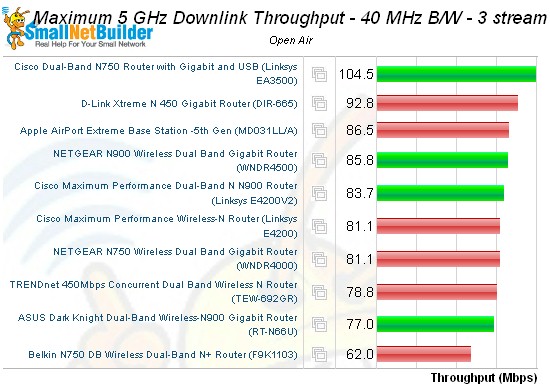
Figure 9: Three stream N product downlink throughput – 5 GHz, 40 MHz mode
Figure 10 shows the uplink comparison, with the ASUS RT-N66U "Dark Knight" topping the chart at 136 Mbps, almost 20 Mbps faster than the Buffalo! The EA3500 at 121 Mbps also beats the Buffalo, but by not as wide a margin.
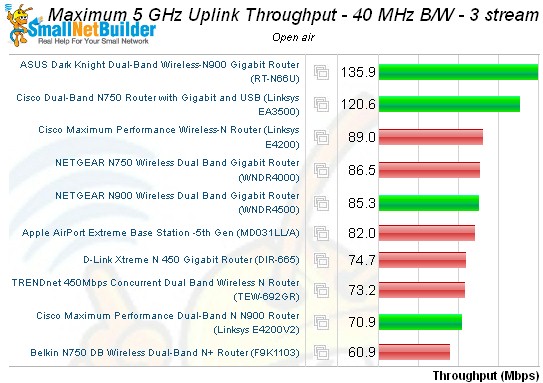
Figure 10: Three stream N product downlink throughput – 5 GHz, 40 MHz mode
Wireless Performance – more
If we look at the IxChariot plots, we can see that peak throughputs during the one minute test runs are actually higher. Figure 11 shows downlink, where a 148 Mbps maximum throughput was recorded. Large periodic downward spikes and high variation both help to push down the average throughput number.
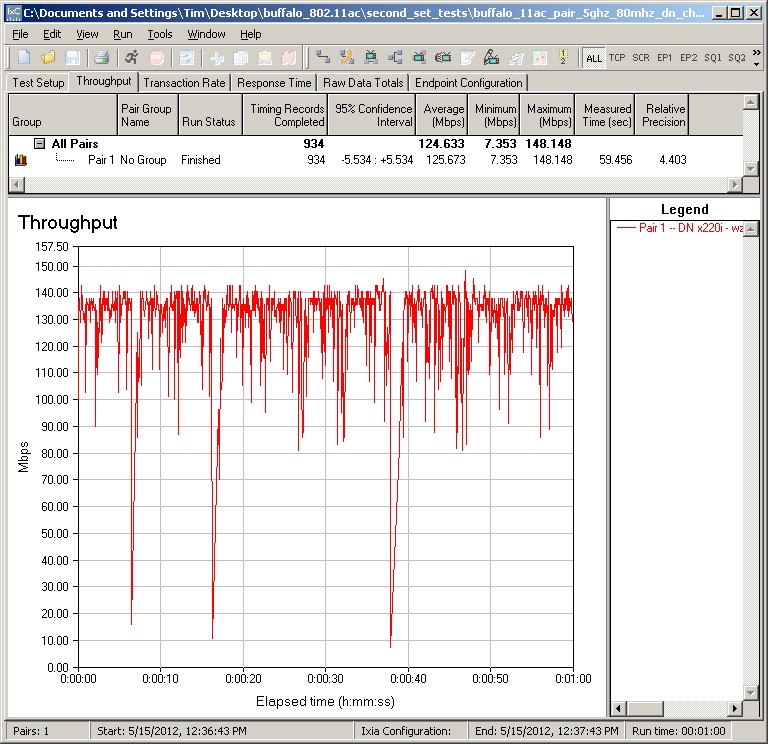
Figure 11: Buffalo WZR-D1800H wireless throughput, 5 GHz, 80 MHz mode, downlink
For uplink, shown in Figure 12, peak throughput is 151 Mbps. Many more big ol’ throughput dropouts, however, push down the average value significantly, however.
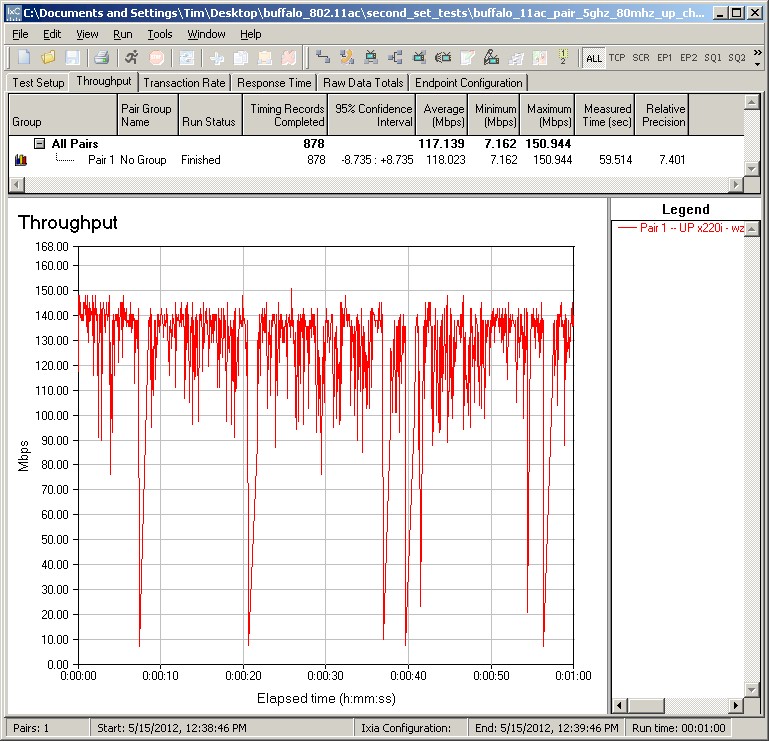
Figure 12: Buffalo WZR-D1800H wireless throughput, 5 GHz, 80 MHz mode, uplink
To be fair, however, we also need to check the three-stream N plots for the EA3500 and RT-N66U. Checking the EA3500’s 5 GHz, 40 MHz mode, three-stream downlink plot shows only a 119 Mbps peak throughput, no match for the 148 Mbps shown in Figure 11. But checking the RT-N66U’s 5 GHz, 40 MHz mode, three-stream uplink plot reveals a peak throughput of 170 Mbps, which is 20 Mbps higher than the D1800H’s 151 Mbps peak shown in Figure 12.!
My takeaway from all this is that, for a single data stream, draft 11ac didn’t produce significantly higher average throughput than you can get from three-stream 802.11n. And keep in mind that three stream N is doing this while eating up half as many 5 GHz channels!
How High Can You Go?
But that’s not the whole story. I know from previous testing that running multiple streams will produce higher total throughput than you can get from one client. That’s why I added the up/down benchmarks to the Charts. Figure 13 shows the up/down chart for 5 GHz, 40 MHz mode, three-stream N.
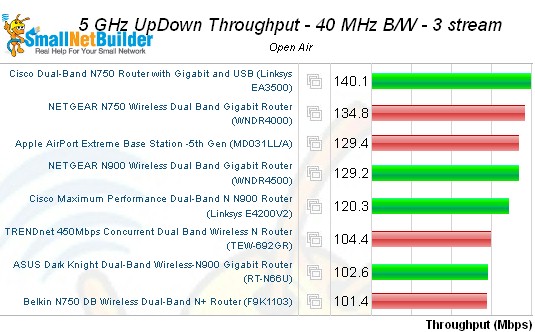
Figure 13: Three stream N product up/downlink throughput – 5 GHz, 40 MHz mode
If you compare Figure 13 to Figures 9 and 10, you see that throughput gain from using multiple pairs varies greatly from product to product.
So I ran the up/down test on the Buffalo draft 11ac pair and got 170 Mbps! This was a pretty big jump from the separate up and downlink runs, so I decided to keep going and add on more pairs. It turns out that I could add a lot of pairs and still get higher total throughput. The plot in Figure 14 shows that seven up/downlink pairs was as high as I could go before significant throughput gain topped out at around 440 Mbps of total throughput.
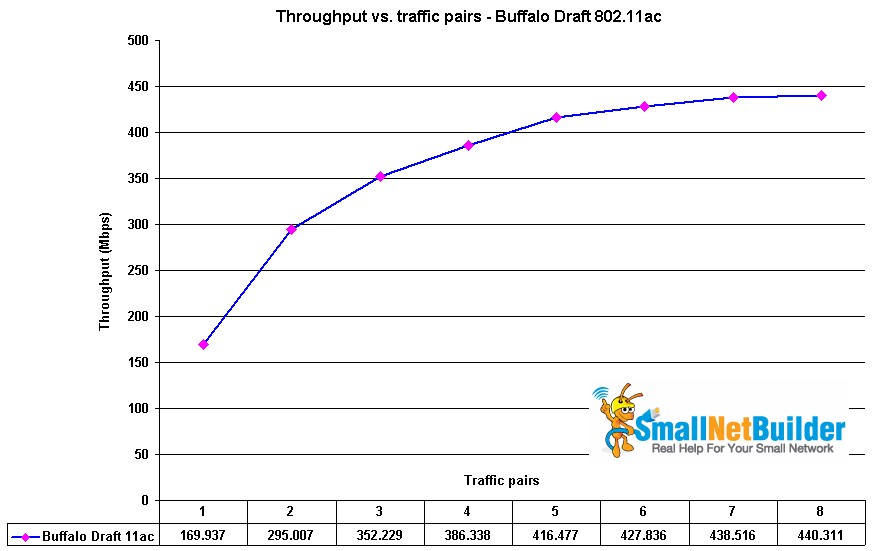
Figure 14: Buffalo Draft 802.11ac – Throughput vs. Traffic Pairs
This is impressive! But could I do the same thing with three-stream 802.11n? To find out, I took a Cisco EA3500, paired it with my standard Intel 6300 three stream test client and started testing. Figure 15 compares the test runs and shows not only a flatter curve for three-stream N, but also that it took only four pairs for gains to stop (actually more like three pairs).
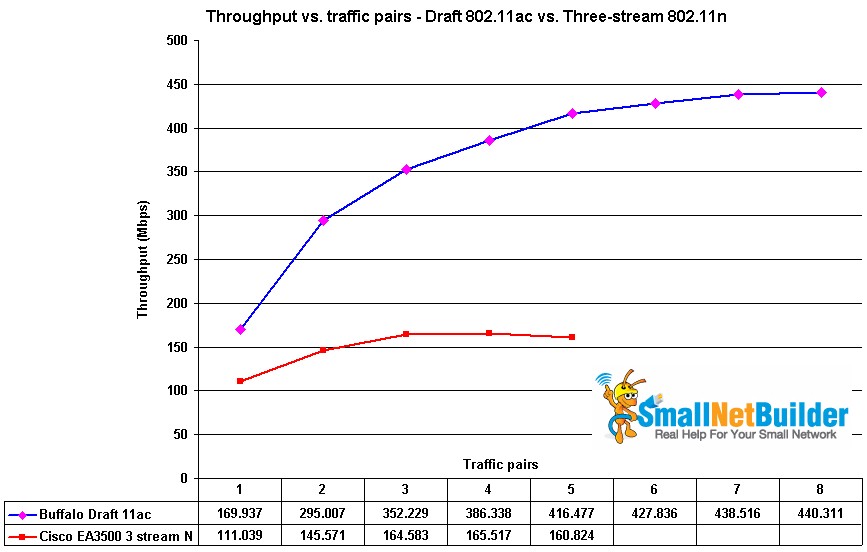
Figure 15: Draft 11ac vs. Three Stream 802.11n throughput vs. traffic pairs
In the end, I was only able to get 165 Mbps of total throughput from three-stream N. So using the Buffalo draft 11ac router and bridge produced 266% higher total throughput than three-stream N.
The conclusion from this experiment is that draft 11ac is more likely to benefit busy multi-user WLANs than to help ensure more reliable wireless HD streaming. It’s possible that folks who want to run multiple HD streams might benefit, but remember that per-stream throughput drops as more streams are added.
Figure 16 shows 80 Mbps down and 90 Mbps up average per-stream throughput vs. the 125 / 117 Mbps down / up throughput shown back in Figures 11 and 12. The big throughput dropouts won’t be kind to HD streams either.
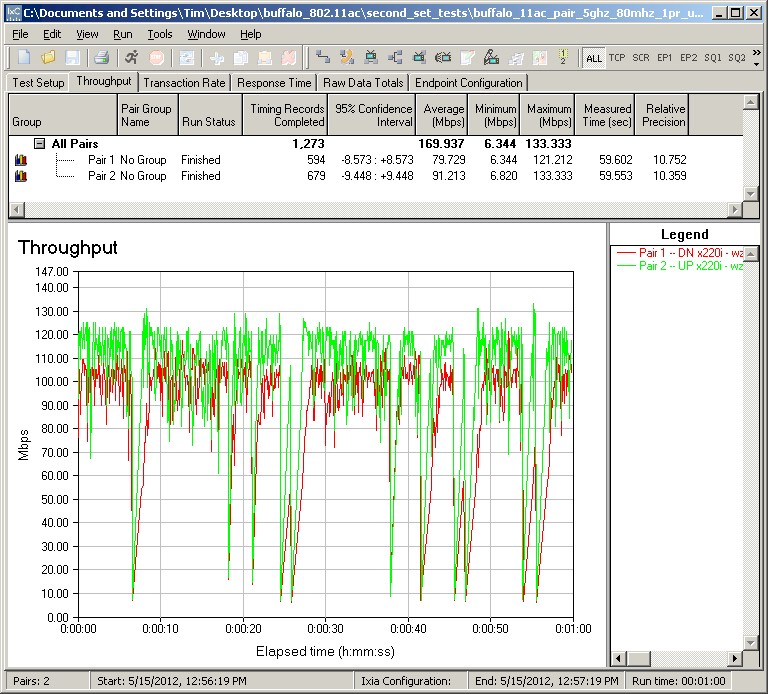
Figure 16: Draft 11ac – one pair
Adding two more streams for a total of four, drops per stream throughput to around 70 and 80 Mbps for down and uplink, respectively. Still not too bad, and certainly higher than you get with even three-stream N. But the throughput is certainly moving in the wrong direction for reliable HD streaming.
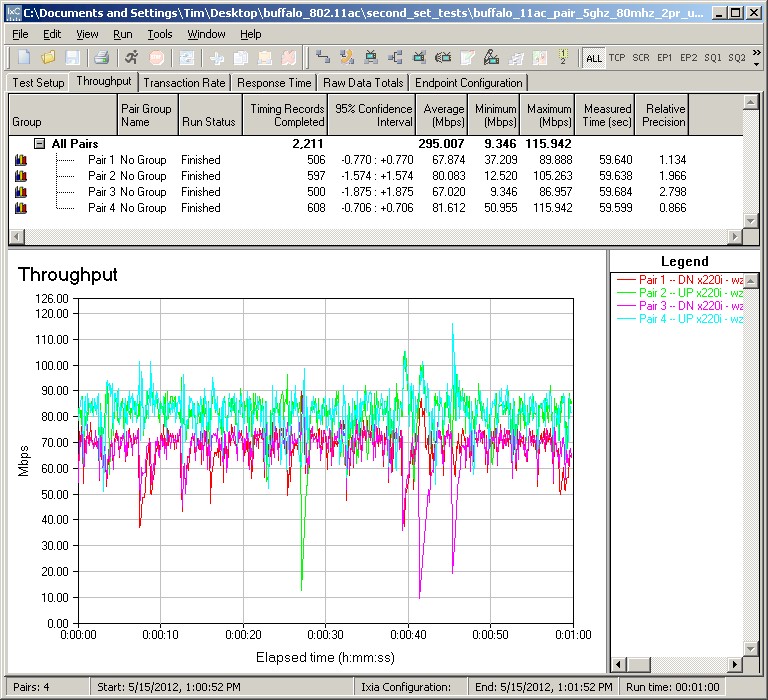
Figure 17: Draft 11ac – two pair
Closing Thoughts
I think I’ve ridden the "How Fast Will Draft 802.11ac Go?" horse as far as it will go. I have to say I am impressed with draft 802.11ac’s ability to provide unprecedented aggregate throughput when handling multiple data streams. Now I can move on to Part 2, where we’ll look at throughput vs. range for as many modes as I can stand testing.
 Buy AirStation AC1300 / N900 Gigabit Dual Band Wireless Router from Amazon
Buy AirStation AC1300 / N900 Gigabit Dual Band Wireless Router from Amazon
